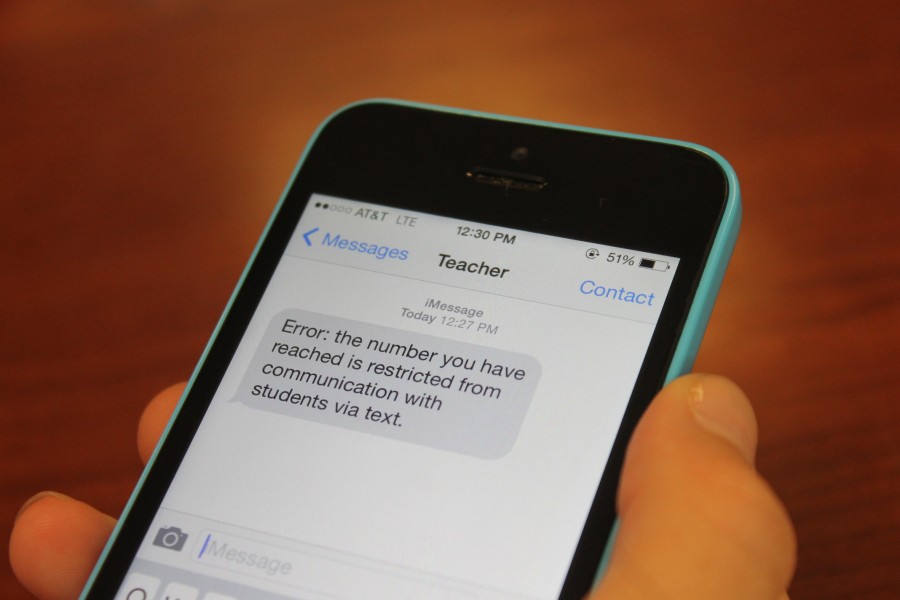TTYL: Teachers and students must find new way to communicate
Photo: Caroline Cannon
This school year’s new texting policy, preventing students and faculty from communicating via text, was put in place in order to prevent future inappropriate situations from arising at St. George’s, due to incidences that have occurred at other schools.
The purpose of the latest regulation, as Will Bladt explained, is to protect students from being put into intense circumstances and under more pressure than already put on.
The school in Los Angeles, where Bladt’s wife worked, had a situation arise that stirred up investigations. A recently-graduated senior girl posted an essay online about what happened to her while she was still in high school.
“I do not think it is fair for students to deal with that kind of stuff,” said Bladt.
In her junior year, her male teacher made uncalled-for advancements. It began with emails, then texts, and finally an inappropriate encounter. Once the story was released, eight other girls came forward with similar stories, and the teacher was fired.
“I am not saying the people at this school are that way, but I want to protect the kids,” said Bladt.
“I understand reasons behind it, but as both a teacher and parent, sometimes it is the easiest means of communication when I cannot call or email,”said Page McMullen in regards to the subject.
“Since I was an assistant director for the middle school play, communication via texting was essential to the success of the performance,” said senior Murry Goldberg. He said how easy it was for director Marques Brown to text him saying if he was going to be late for rehearsal, and then Murry could relay the information to everyone else.
Bladt points out that students can be impulsive. The concern here is that students might text teachers inappropriately without using proper judgment on how to react to certain things.
Zack Adcock, upper school English teacher, said that it is probably a good thing to have this new policy set in place. He said that the fact that students and teachers have such a close relationship that they are comfortable texting is admirable, but “the purpose of it is to ensure there is a level of formality between students and teachers.”
All in all, the reasoning for the teacher-student texting prevention is to ensure the safety of both faculty members and students.






